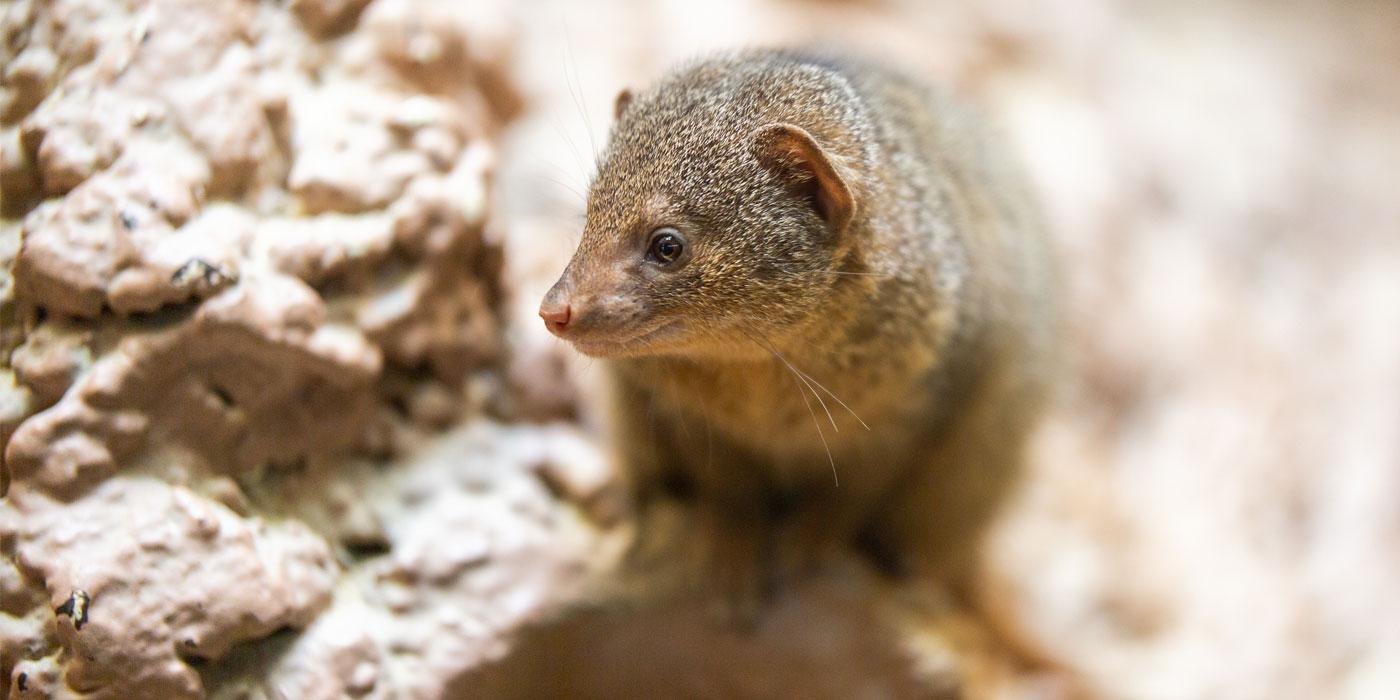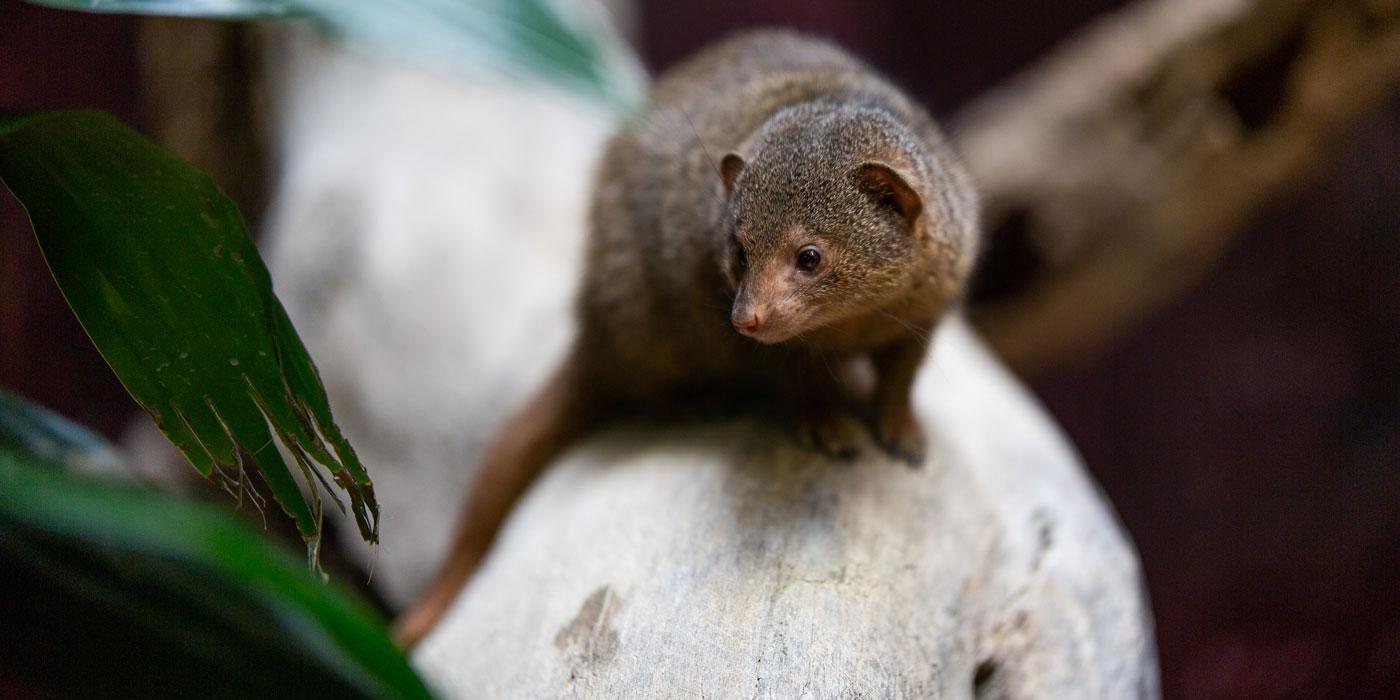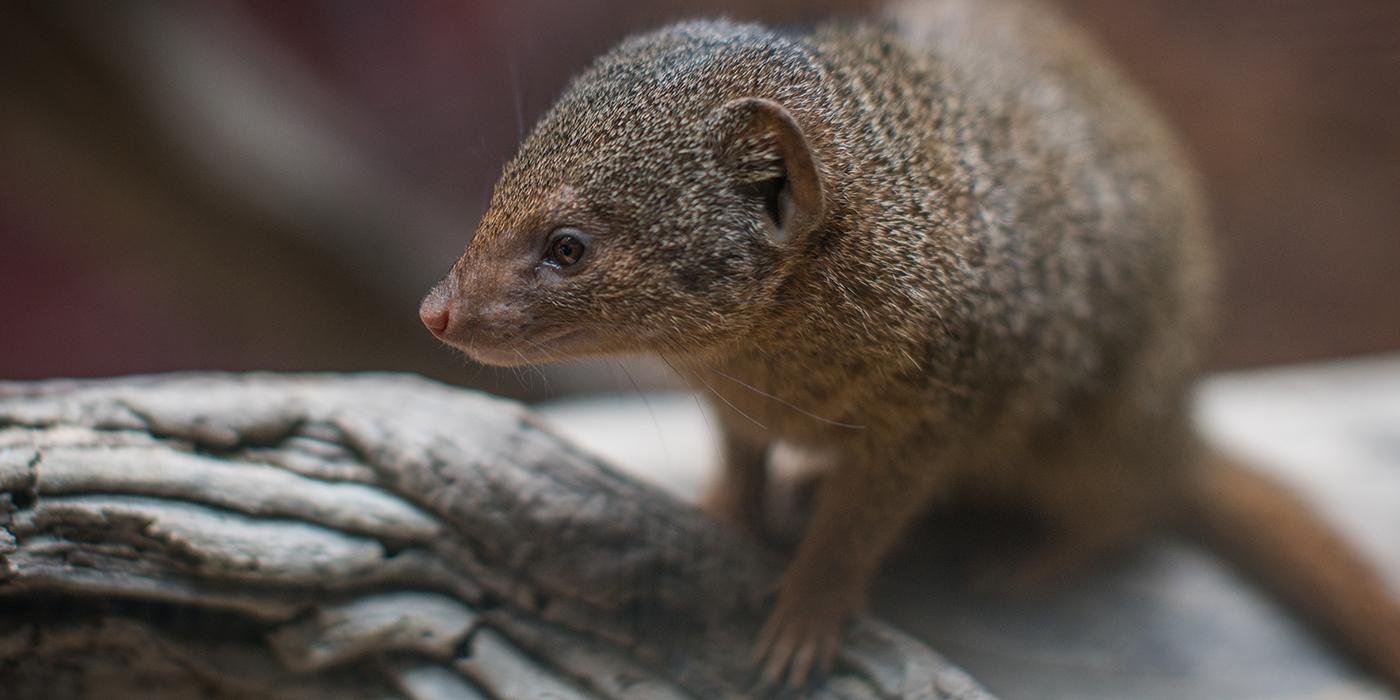Physical Description
Dwarf moongooses have a smooth, glossy coat, which varies in color but is generally speckled brown to black. Their tails and lower legs are typically darker with slightly paler undersides.
Size
They measure 7 to 10 inches long (18 to 26 centimeters), including their tails, which are 4.7 to 8 inches long (12 to 20 centimeters). Males weigh about 11.4 ounces (326 grams) and females are slightly smaller.
Native Habitat
Dwarf mongooses are found from Somalia and Ethiopia to eastern South Africa and Namibia. They live in savannah, woodlands, brush country and mountain scrub. Their elevation range varies from sea level up to 5,900 feet (1,800 meters). They prefer territories that include termite mounds or rock crevices and woody vegetation, such as thickets or scattered bush.
Lifespan
Dwarf mongooses can reach 18 years of age. Their main predators are large gray mongooses, raptors, snakes, marabou storks, jackals and monitor lizards.
Communication
Mongooses use anal and cheek gland secretions to mark upright objects near termite mounds used as overnight refuges.
Food/Eating Habits
Dwarf mongooses eat mostly insects, including beetles and grasshoppers, though they may also eat spiders, scorpions, small vertebrates, eggs and fruit. They spend most of their days looking for food among brush, leaves and rocks. They forage in groups, but each individual catches its own food. They kill their prey with a bite to the head. Dwarf mongooses are water independent but will drink when water is available.
Sleep Habits
Dwarf mongooses are diurnal, and begin and end each day sunbathing and socializing with the pack at their burrows.
Social Structure
The average pack of dwarf mongooses includes about 12 animals but can reach as many as 32. Territories are smaller in wetter areas compared to drier areas and are passed down through generations of the pack. Mongooses are matrilineal, and the highest ranking mongoose in a pack is typically an older, dominant female. The second ranking animal is the dominant female's mate, and the monogamous pair are the only breeders in the group.
Within any age class, females are dominant over males. Sub-adults and immigrants clean, carry and feed juveniles and take turns babysitting. Occasionally, females other than the alpha will nurse the young. Despite this restricted breeding potential, maturing young mongooses do not appear to leave the group, and only when the female dies does the group split. This may be because available habitat is usually occupied to capacity, limiting opportunities to found a new pack. Non-breeders waiting their turn to become dominant can often get into a shorter queue by transferring from their natal pack. Most transfers occur between two and three years of age, during the rains.
Relations between mongoose neighbors are hostile, and larger groups tend to displace smaller groups when they meet. Conflicts usually occur at a territory border, where neighboring packs use the same termite mounds on a first come, first served basis.
Reproduction and Development
Births occur mainly during the rainy season from Nov. to May, and the alpha female often has three litters a year. Gestation lasts 49 to 56 days, and the average litter size is four mongooses. Young nurse for 45 days and may begin eating solid food before being fully weaned. Juveniles begin to forage with the group at around 6 months of age. Full sexual maturity isn't reached until about 3 years of age.
Help this Species
- Share the story of this animal with others. Simply raising awareness about this species can contribute to its overall protection.
Animal News

Leaf-tailed Gecko Treated for Skin Cancer With Chemotherapy






